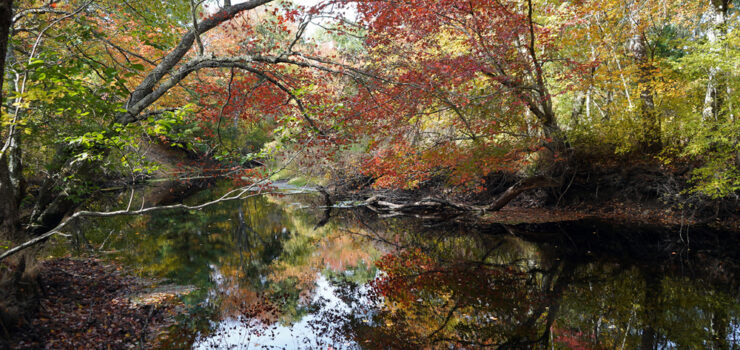EPA Praises Charlestown’s Current Subdivision Regulations
A U.S. Environmental Protection Agency (EPA) publication in late 2021 used Charlestown’s newly updated Subdivision regulations as an excellent example of a strategy for permitting development with minimal impact through site design requirements. Quoted text is from the EPA publication.
“Undeveloped lands are more than open spaces begging for development; they are working landscapes that with proper measures can mitigate human impacts by providing the ecosystem services we depend upon: maintaining water quality, soaking up carbon, preserving a sense of place, and sustaining habitats and communities.”
All development generates impacts as roads and utilities are needed and house lots are cleared. When we talk about a development process that protects the environment what we really mean is a process that mitigates the impacts as much as possible.
“Conservation development is the foremost strategy for minimizing new development impacts. Rather than clearing whole sites without regard for the local ecology and the benefits it provides, this strategy first considers how to preserve critical habitat and hydrological elements of the landscape as undeveloped open space. Site context is key; connections between parcels of undeveloped land can be preserved with forethought to maintain habitat connectivity and ecological continuity.”
“Charlestown has taken the initiative to write new planning methods into their code providing space for stormwater infiltration, wastewater treatment, wildlife habitat, and much more, without sacrificing density.”
Charlestown’s regulations offer site design guidance “that preserves the ecological integrity of the entire lot as best as possible. Forests are recommended for their influence on site hydrology. Whereas some builders still assume it’s cheaper and easier to clear a whole site for building, the ensuing complications with managing water on site can make things far more costly. It’s smarter and cheaper to use forests as qualified pervious areas that alleviate the need for constructed treatment systems, perhaps entirely.”
“Developers can benefit financially from better ecological planning, too. Conservation development that is responsive to local ecological conditions provides multiple benefits for municipalities and their residents, developers, and the environment. Multiple studies show that permanently protected open space increases the value of adjacent residential land. This creates a potential win/win situation where conservation subdivisions yield greater profit for developers and greater long- term value for residents. In addition, development costs will often be lower for conservation subdivisions due to the clustering of development and inclusion of low impact development features. On-site savings during design and construction, such as the use of green infrastructure that is less costly and intensive than traditional systems, keeps overhead low. More responsive site design allows a developer to plan around the topography and ecology of the site, resulting in less site preparation, and savings in areas like stormwater system design. The compact design of conservation developments, too, offer savings. Shorter runs are needed for roads and utilities, sparing the developer the cost of unnecessary infrastructure.”
The new Charlestown Town Council is proposing to reverse course on these environmental protections and replace the subdivision ordinance with one that greatly increases the number of house lots on parcels containing wetlands and greatly reduces the amount of land set aside for protection in all new subdivisions whether they contain wetlands or not.
The full article is at the EPA website.

August 27, 2023 @ 12:18 pm
Hi Mike, I assume that when you say “when a town …. ” I assume that you mean “When a town council…” Correct?
August 27, 2023 @ 12:07 pm
Why, when developers as well as residents can benefit financially from better ecological planning, is our current subdivision ordinance on the cutting block? It does not make sense for the current Town Council to want to gut what appears to be a win-win solution according to the US Environmental Protection Agency and other experts. Our drinking water, the health of our freshwater and saltwater ponds, our tourism economy, and our low tax rate depend on WHERE future development will be located. The changes proposed do not make sense.
August 26, 2023 @ 10:53 am
When a town is committed to making money for special interests, environmental protections become a loss leader and a distraction.